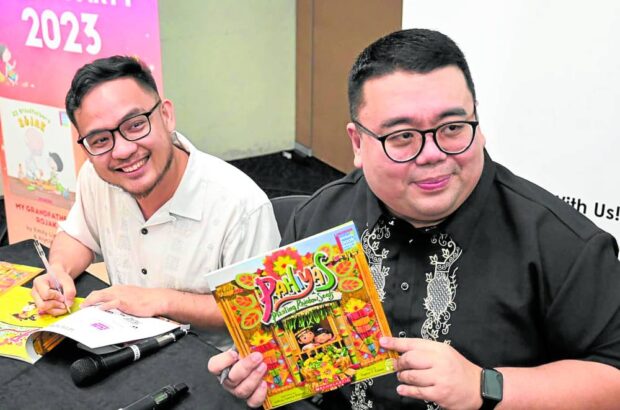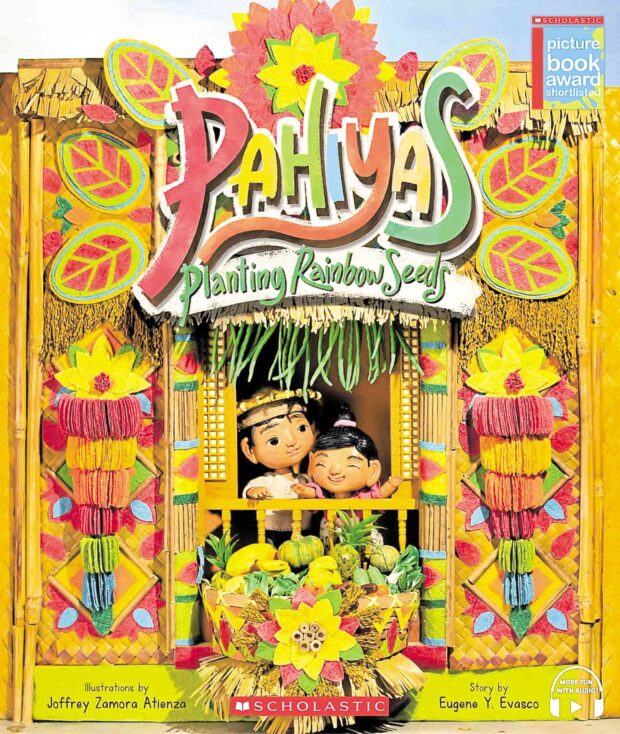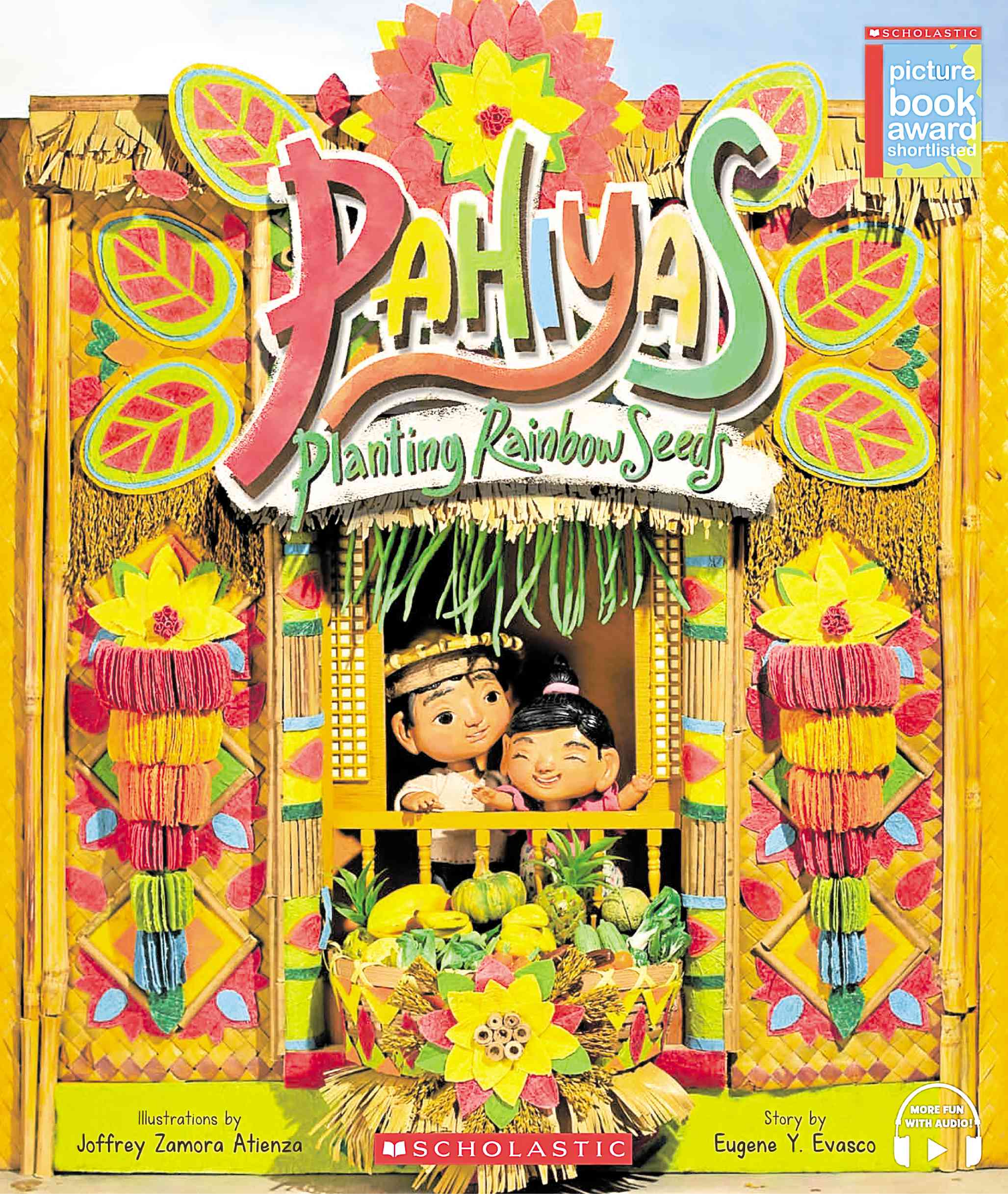
Of course, one takes special notice of this title—”Pahiyas: Planting Rainbow Seeds” by Eugene Y. Evasco, illustrations by Joffrey Zamora “Pepot” Atienza (Scholastic Singapore, 2023)—published as it is by Scholastic and a Picture Book Award finalist in 2019 during the annual Asian Festival of Children’s Content (AFCC) in Singapore.
Not only that, for the author and illustrator team is a formidable one, to begin with. Evasco, a professor of creative writing and children’s literature at the University of the Philippines, is a multiawarded poet, essayist and children’s book author. He also enjoyed a stint at the International Youth Library in Munich.
Yearly festival
Atienza has made a name for himself nationally and internationally as the creator of distinct clay dioramas and illustrations.
The reader is invited to join Leona and her brother-narrator as they enjoy the yearly May 15 festival in Lucban, Quezon. The short narrative begins and ends with the idea of a rainbow—the harvest is as colorful as a rainbow.
And indeed the harvest festival, as thanksgiving to San Isidro de Labrador, presents a rainbow of beautiful agricultural products displayed along with the familiar kiping, the edible leaf-shaped wafer made from glutinous rice. The colorful kiping décor is described as “blooming like wild sunflowers and rare orchids.” Kalabasa is “radiant in the summer heat.” There are “curtains of string beans, eggplants and radishes” and the enticing smell of a Lucban summer with pineapples, watermelons, mangoes. Who can resist the image of “mountains of melons and hills of coconuts” and “chandeliers of saba bananas” expected to ripen for one’s halo-halo?

Rainbow harvest
As one is immersed in these sensory images, one almost forgets to ask why Leona is being constantly asked whether she can hear whispers and giggles, feel the pervading happiness, smell the curtains of vegetables, smell the fragrance of fruits, hear the band music. It is only at the end when one realizes that Leona is blind. But it is not considered a liability nor a deprivation, for all her other senses still allow her to enjoy and participate in the rainbow harvest each year.
The visual images are overwhelmingly rich and lush, a foil to the narrative’s graceful and sparing prose. The artwork is a painstakingly elaborate production, as described in the “About the Illustrations” note. In the book, he uses 3D sets and clay figurines and props, using wire and tin foil for every item. It is then covered with resin clay, molded and painted with acrylic. The clothes—for all the human figures wear clothes—Atienza has hand-sewn himself. Props were created using found objects. Then the sets had to be built with wood. The last step was to prepare the scenes to be photographed for the final artwork.
With all that, the reader is compelled to return to every page to check out and appreciate every item Atienza’s amazing artistry has fashioned, faithfully capturing the Earth’s rich yield.
This book, just launched at last month’s AFCC, was sold out, so copies are not yet in Manila. How wonderful that our Pahiyas festival will be known on foreign shores. The 12-word glossary is helpful and informative even for us, Filipino readers, who are shamefully not too familiar, as we should be, with Philippine traditions and practices. “Pahiyas” is a valuable addition to classroom libraries.









































